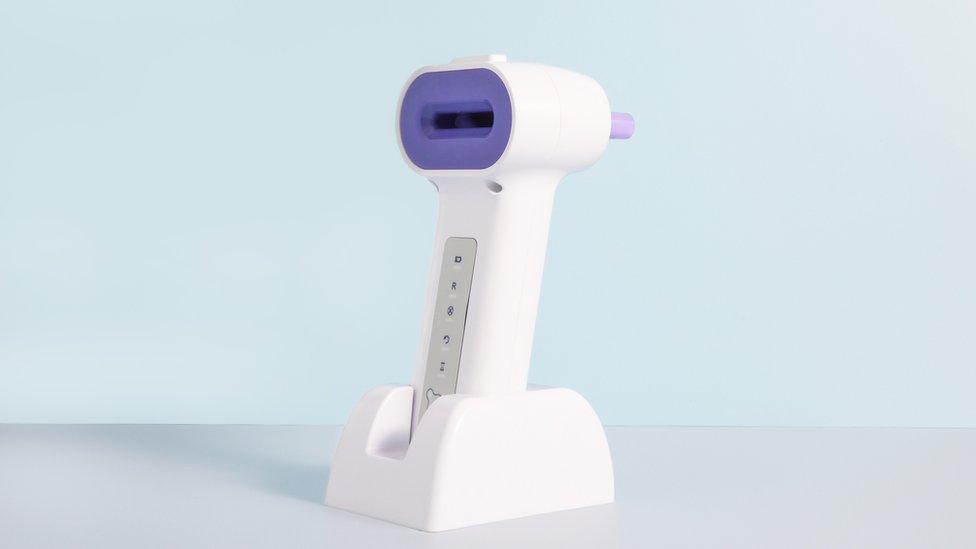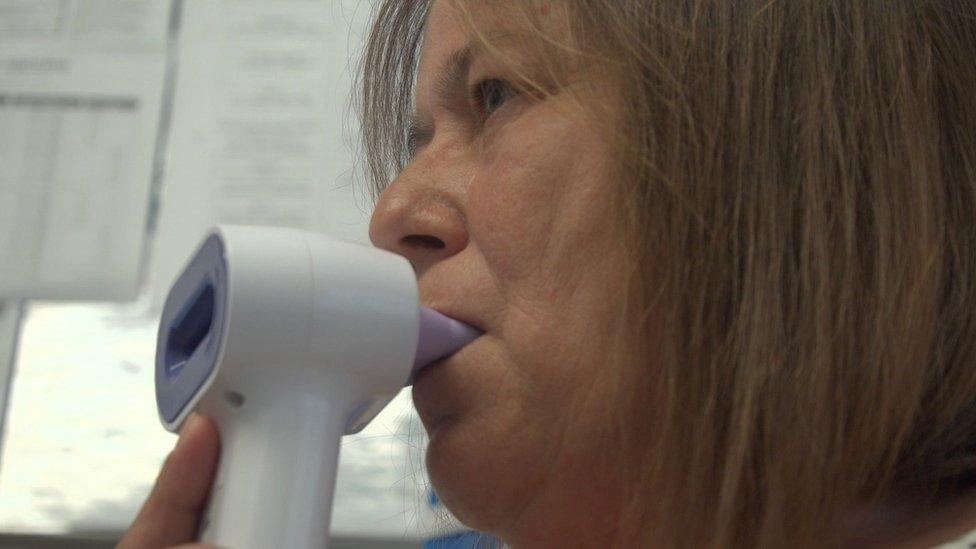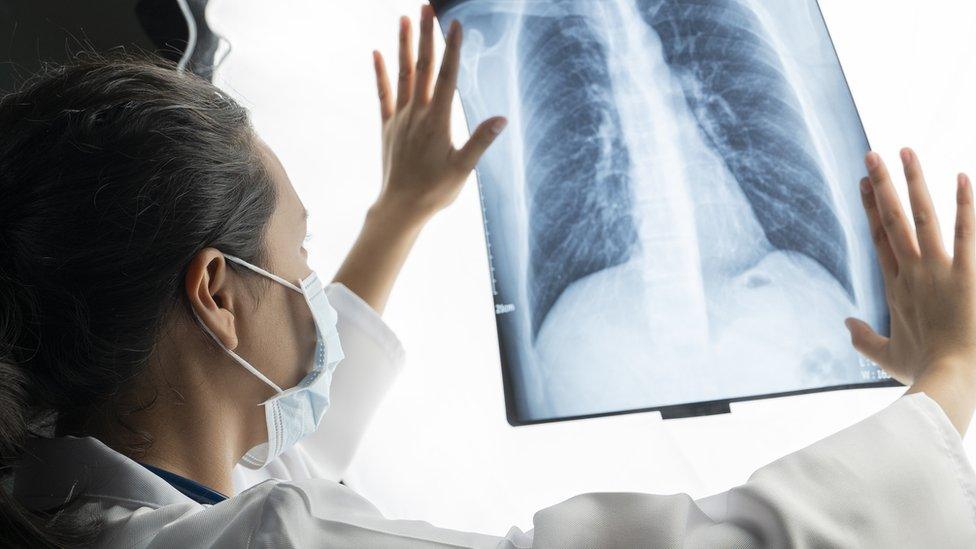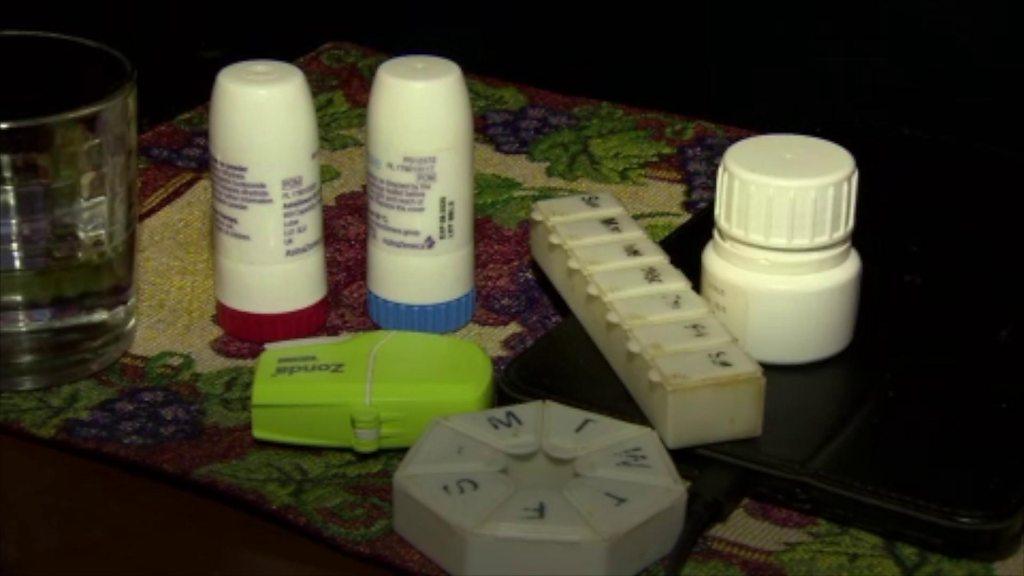Oxford health professionals first to pilot COPD device
- Published

The N-Tidal device test takes under five minutes from breath to result
Oxford clinicians will be the first to use a new AI-driven device for assessing chronic obstructive pulmonary disease (COPD).
Over the next 12 weeks up to 600 patients in the city will take part in a pilot of N-Tidal technology.
Patients breathe into the device and a high-resolution carbon dioxide sensor measures changes in lung function.
An Oxford University GP clinical lecturer said it could help "transform" the way the condition is diagnosed.
COPD, external is an incurable chronic lung condition affecting more than 1.2 million people in the UK, and respiratory disease, external is the third leading cause of death in England.
The N-Tidal device has been developed by health technology company TidalSense.
Clinical studies have suggested it can provide over 91% accuracy in diagnosing severe cases from a single breath recording.

Bev Walton said the N-Tidal device "would speed up the process"
Dr Ameera Patel, CEO of TidalSense, said they "desperately need to arm primary care doctors with accurate, easy-to-perform tests that enable the early and accurate diagnosis of patients, at the point at which they present with symptoms".
Oxford will lead the technology's nationwide launch, in collaboration with Healthier Oxford City Network, a primary care network with four practices.
Dr Helen Ashdown, a GP clinical lecturer at the University of Oxford, said that the technology had "the potential to transform" the diagnosis and management of COPD.
'Really pleasant'
Patient Bev Walton, who developed COPD on top of her asthma, described the commonly-used spirometry, external breathing test, as "quite difficult".
"Breathing out and trying to empty your chest made you cough, it made you light-headed, it made you feel like you were going to pass out. And it took about 25-30 minutes," she said.
"With this new device, it actually was really pleasant. You just sat there and breathed normally into the machine, so you didn't have to try and push breath out to get the measurements."

Follow BBC South on Facebook, external, Twitter, external, or Instagram, external. Send your story ideas to south.newsonline@bbc.co.uk, external.
Related topics
- Published15 November 2022

- Published18 January 2019
